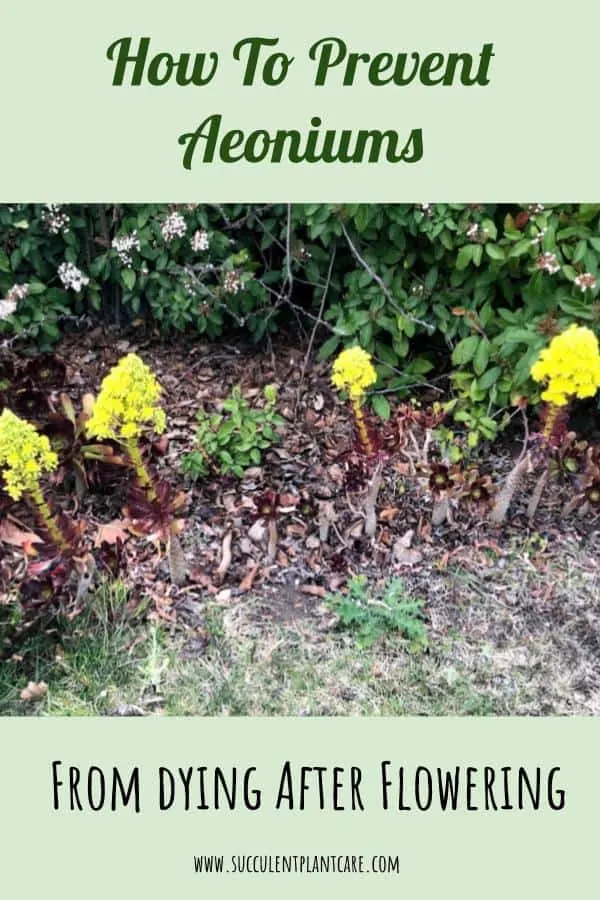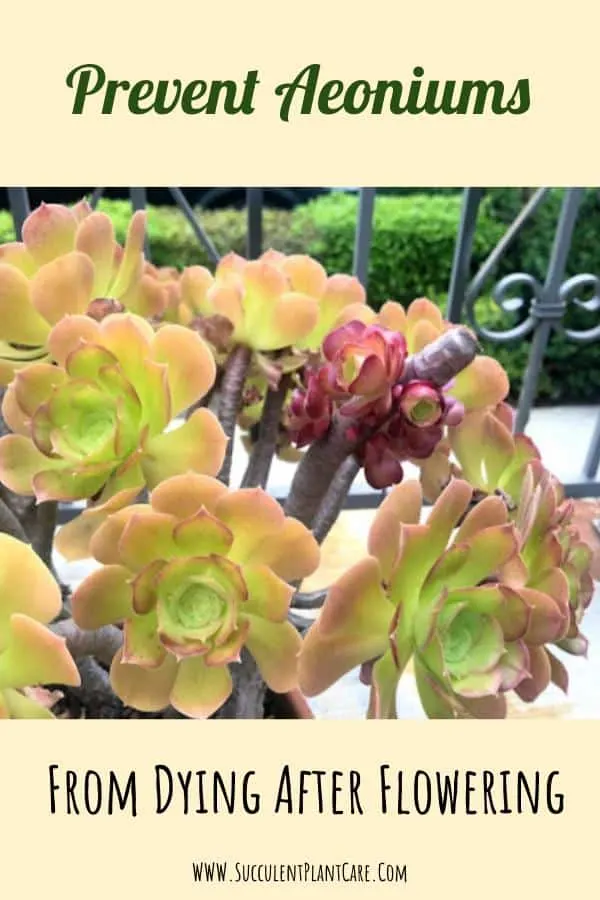It’s no big secret that most aeoniums are monocarpic plants, meaning they die after flowering. I say most because not all aeoniums are monocarpic. But do they really die after flowering? Well, yes..but there’s something you can do about it. Here’s how you can save your aeonium from dying after it’s done blooming.
When an aeonium blooms, that flower head where the bloom stalk comes out from eventually dies after blooming. But here’s a wonderful thing that I have discovered that can happen to that same branch where the bloom stalk is growing. After blooming, cut off the bloom stalk and instead of dying off, little clusters of baby plants will start growing on the stump where the bloom stalk was. It doesn’t happen overnight and will take weeks, even months for new growth to happen.
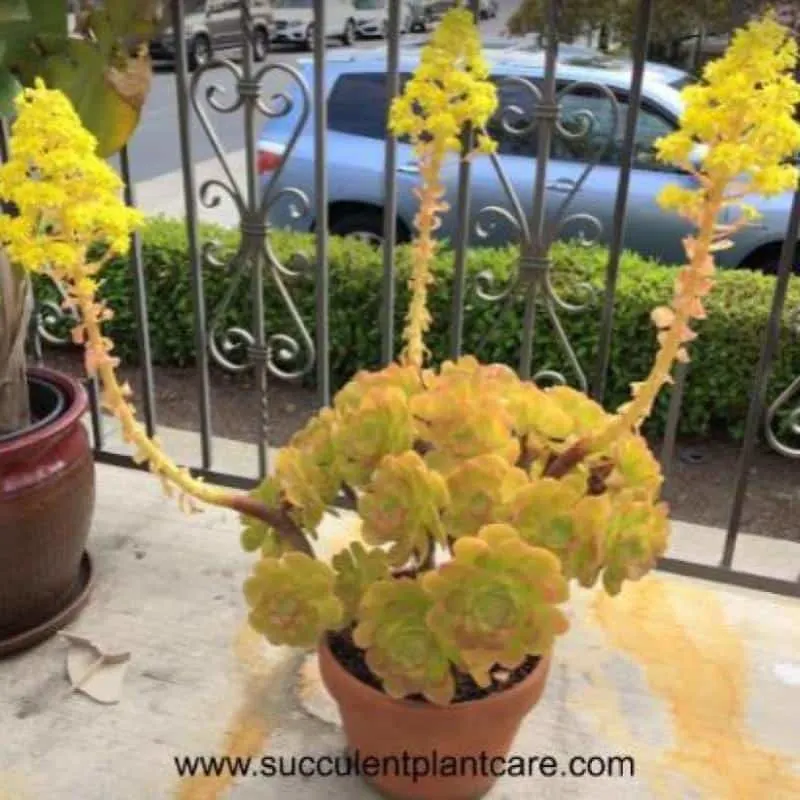
Three aeonium rosettes in bloom
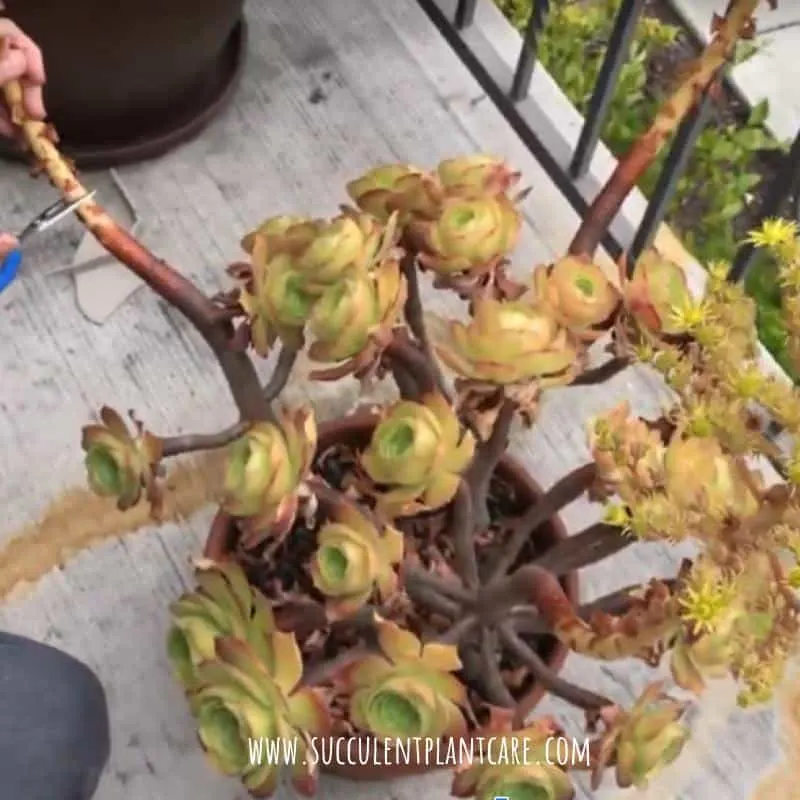
Cutting off the bloom stalks
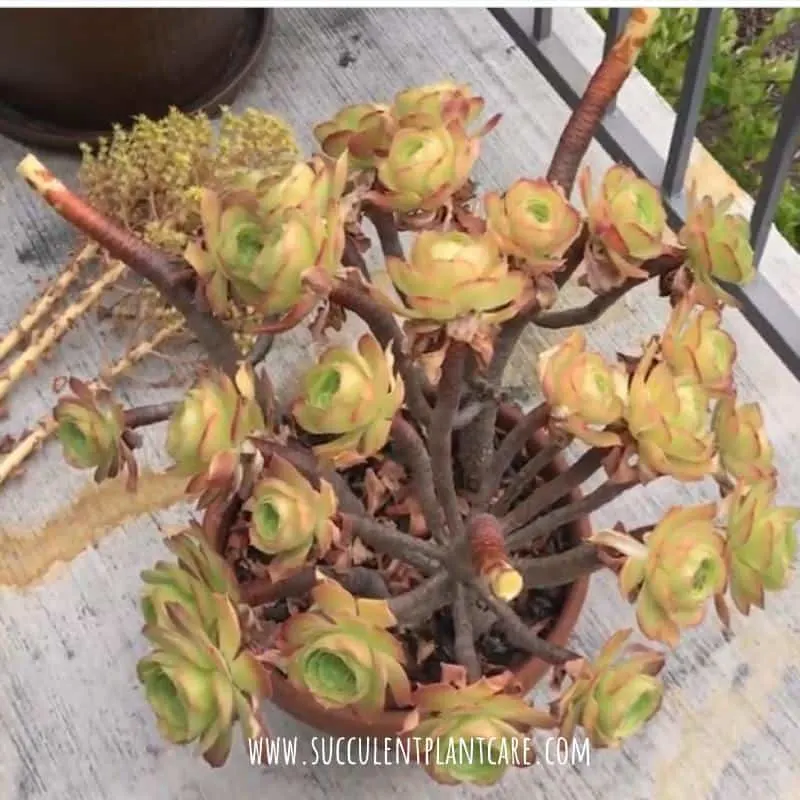
Stumps left after bloom stalks were cut off
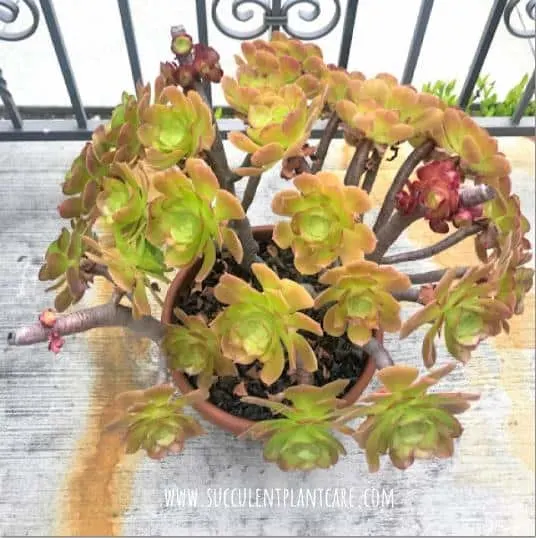
A few months later
The trick is to cut off the bloom stalk after it’s done blooming. You don’t have to do it right away as soon as the flower stalk comes out. Nor do you have to prevent the plant from blooming either. It really makes no difference.
You might as well enjoy the vibrant, colorful blooms and the nice contrast in colors you will get to see when the flowers come out. Enjoy the flowers, give the bees,butterflies and pollinators something to feast on as well. The flowers stay in bloom for weeks or longer, depending on where you live. And when you’ve fully enjoyed the bloom, cut it off.
Once cut, ignore the stump and do not do anything special to the plant. Water as you normally would water your plant. And when you’re not looking, these little clusters of baby plants will start forming. It took several weeks or even months for mine to grow. I’m not sure exactly because I honestly wasn’t paying attention. I was not expecting the stumps to do anything because I thought they were a goner.
Then one day, just like that, I noticed these baby plants growing. Soon I’ll have even more aeoniums growing from the three blooms stalks I cut off. Isn’t she the gift that keeps on giving?
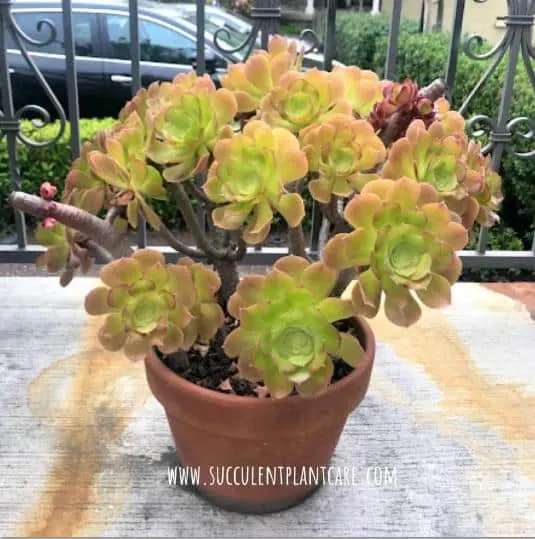
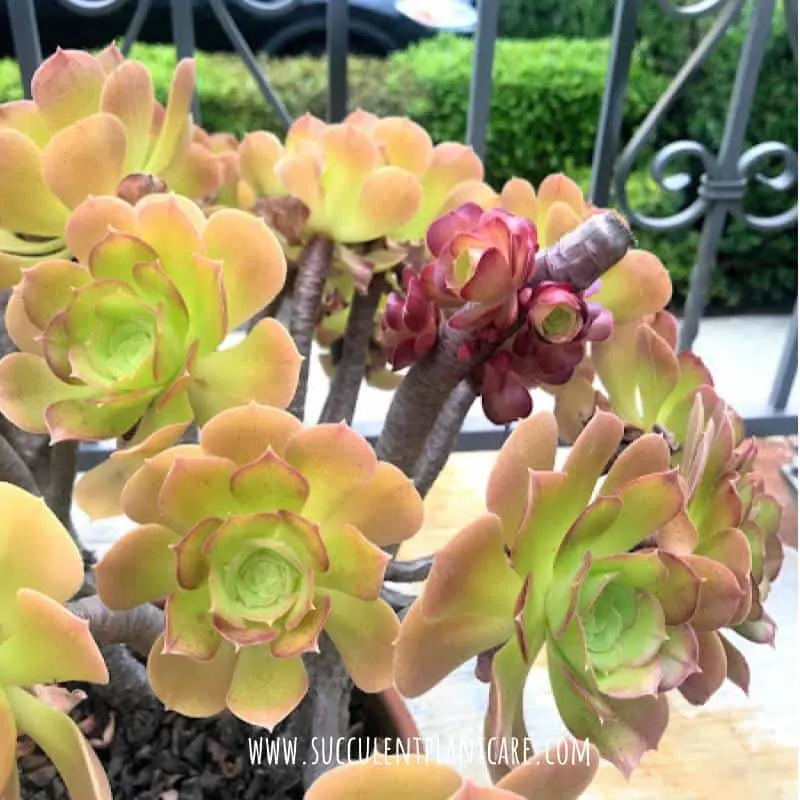
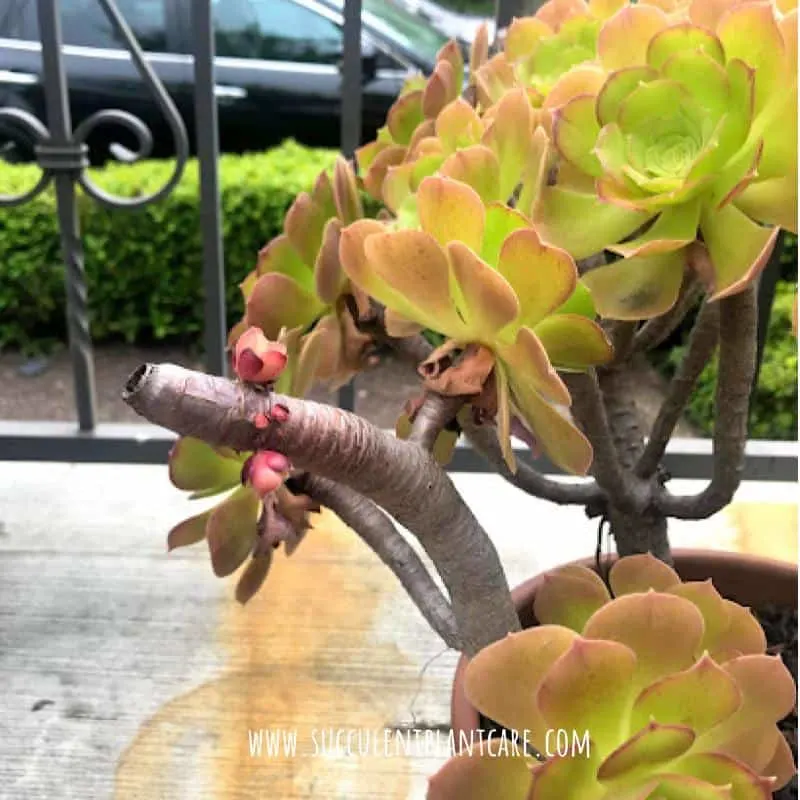
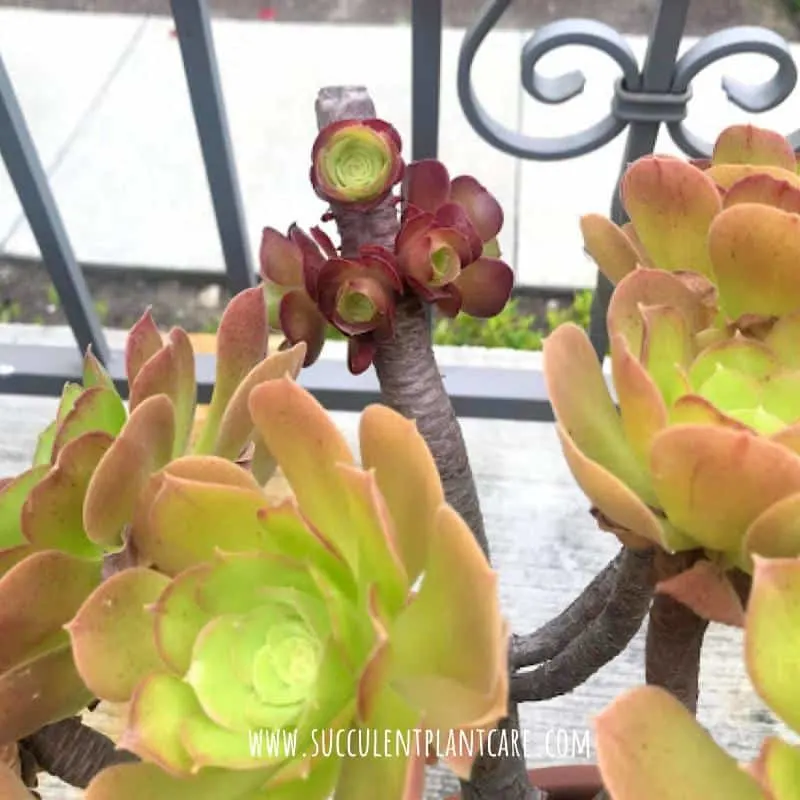
From that one single mother plant, it had branched out and produced plenty of new plants, and even with its last dying bloom, it still was able to produce these baby plants to keep it going long after it’s gone. Mother nature is just wonderful, isn’t it?
Update this photo of the same plant years later.
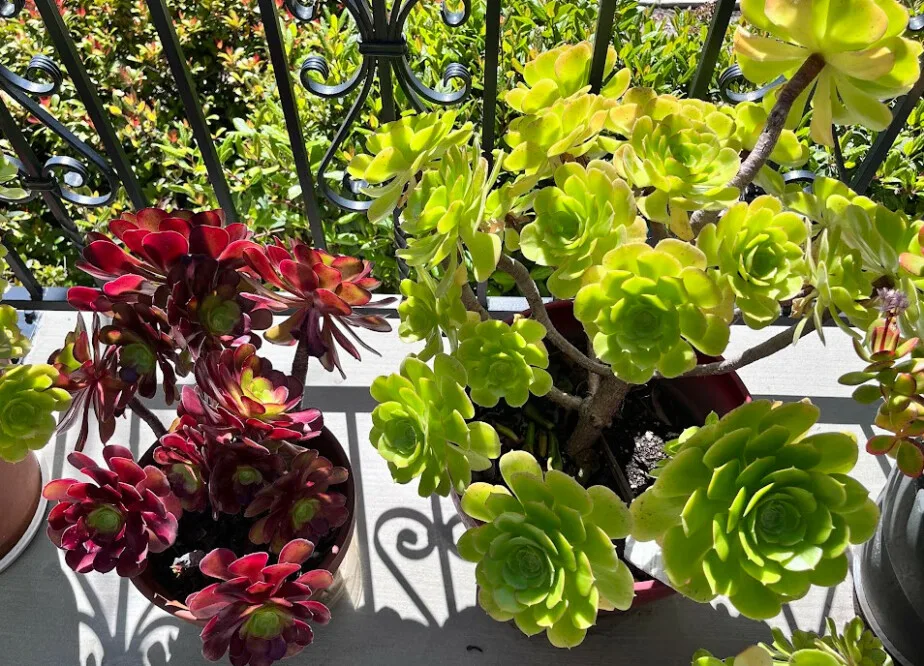
What happens to the rest of the plant after flowering?
With monocarpic plants, it is understood that only the plant—most often the mother plant, blooms and dies after blooming. The rest of the plant surrounding it goes on living, as long as they do not bloom. Fortunately, monocarpic plants do not bloom every year. In most situations, they only bloom after having produced plenty of pups or baby plants. Most monocarpic plants are usually great producers so they would have produced a lot of plants before they hand it over to the next generation, so to speak.
What if you don’t like how the flowers look?
Some people do not care for the look of the flowers and pull out the whole plant to uproot it. I have seen videos of people yanking off the entire plant before it’s in full bloom because it was going to die anyway. If you yank out the whole plant then of course it will not be able to reproduce. If you have an abundance of these aeoniums in your garden or if you don’t wish to multiply them then this is what you should do. But if you’re trying to grow and multiply your collection, the best thing to do if you don’t like the look of these flowers but still want your plant to reproduce is to behead the plant as soon the bloom stalk appears instead of uprooting it.
What happens if you don’t cut off the blooms?
If you don’t cut off the bloom stalk, what happens? Would the branch still grow new plants along the stems? Some will and some won’t. From what I’ve gathered, most won’t. What’s most likely to happen is the branch where the flower stalk came out from will eventually wither and die off. But the rest of the plant surrounding the bloom stalk will go on living. Here’s a picture of a dried up bloom stalk that didn’t get a chance to reproduce further. The whole branch was just left to wither and die, but the rest of the plant will be fine.
As you can see in this picture, this aeonium’s bloom stalk was left to dry long after blooming.
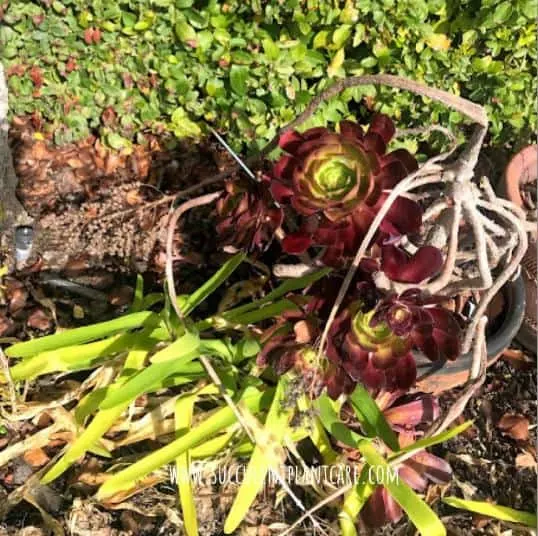
Not all aeoniums are monocarpic
As mentioned, most aeoniums, but not all, are monocarpic. So how can you tell if yours is monocarpic or not? Once you’ve seen a monocarpic succulent of any kind, you can tell whether you’ve got a monocarpic plant or not when it blooms.
Pay attention to how the plant blooms. A monocarpic plant will have the flower shooting out from the center or head of the plant. As the bloom stalk grows out of the center of the plant, the whole plant transforms itself into a long flower stalk. The flowers are usually bright, vibrant and quite showy.
This ‘transformation’ from plant head to flower stalk happens with any kind of monocarpic succulents, not just aeoniums. Sempervivums (hens and chicks), and agave plants are also monocarpic plants. What makes aeoniums different from these other monocarpic succulent plants is their thick stems or branches that support the rosetter where the blooms come out. Take a look at a sempervivum or an agave plant. These plants do not possess stems or branches that support the plant.
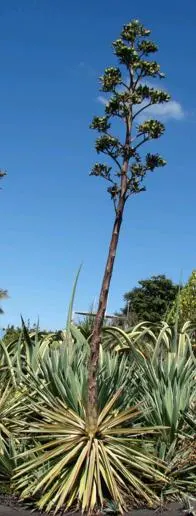
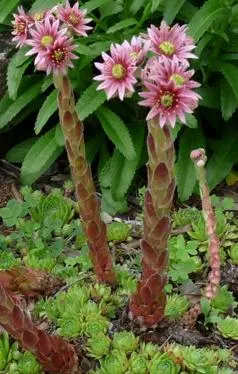
These are pictures of a monocarpic agave plant and sempervivums (hens and chicks) in bloom.
What does a non-monocarpic aeonium look like when it blooms?
Like other non-monocarpic succulents, the bloom(s) will come from the sides of the plant, often sprouting from underneath or in-between the thick leaves of the plant. Here’s a non-monocarpic aeonium:
Aeonium Arboreum ‘Electra (aka Purple Pinwheel Aeonium). Unlike most aeoniums, it is non-monocarpic and does not die after blooming.
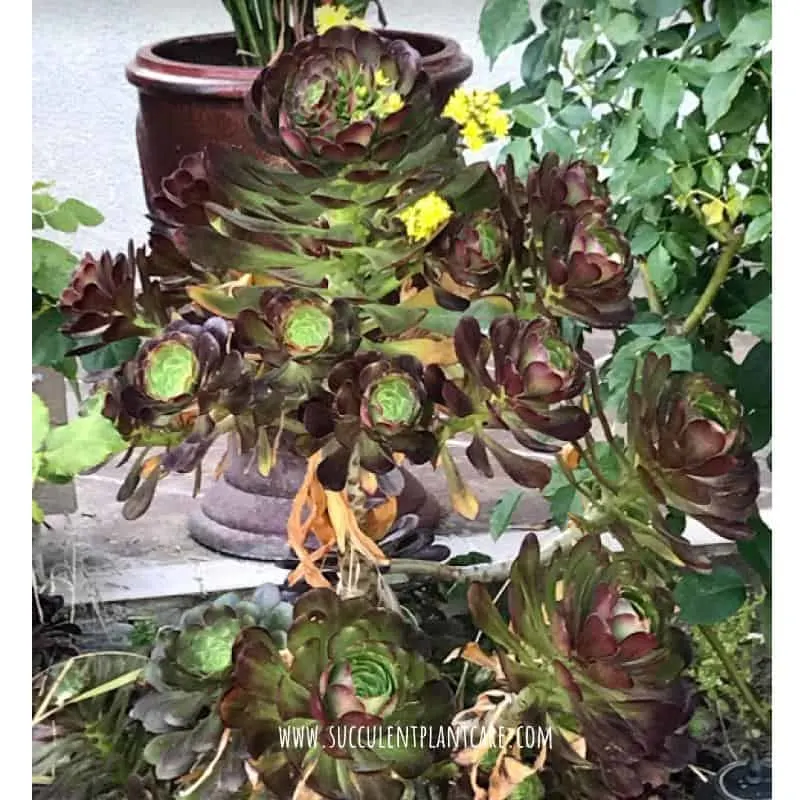
As you can see from the picture, what’s different about this aeonium is how it flowers. The flowers are much smaller and more inconspicuous than how an aeonium normally blooms and appear from the sides and undersides of the rosettes. This particular plant has small yellow flowers. The thin bloom stalks can be cut off or left to dry on its own after blooming. Either way, it doesn’t really affect the plant.
How to make aeoniums branch out
A related topic is how to get aeoniums to branch out. Aeoniums achieve their tree-like appearance by the way their stems grow and branch out. Aeoniums branch out from one flowerhead to grow many new plants. This is a natural process that happens and you usually do not have to do anything special to your plant for this to occur.
If you want to give your aeonium a little nudge to get it to branch out, the easiest way I found is to take a stem cutting from a healthy plant and stick it in soil. Give it a few weeks for the stem cutting to grow roots. Once rooted, you will notice the flower head slowly changing as little baby plants emerge from the sides of the leaves. Soon you will notice this single-stemmed rosette branching out into multiple aeonium plants. This is the exact same way I propagate my aeoniums using stem cuttings.
How to help aeoniums branch out step-by-step
- Obtain a stem cutting from a healthy plant.
- Let stem dry for at least a day or two, more if you live in a humid climate. The thicker the stem, the longer it requires to dry.
- Dip the cut end of the stem in rooting hormone (this step is optional). Rooting hormone is not a must but may help speed up the rooting process.
- Prepare a well-draining potting mix suitable for succulents (I like to use cactus mix). Stick the stem cutting in the soil. Here are my succulent soil recommendations.
- Water the soil every few days or when dry and keep away from direct sunlight to prevent burning the stem cutting
- After a few weeks, roots should have developed. The easiest way to check for roots is to tug at the plant. Pull the plant gently. If it does not slide out of the soil easily, that means roots have formed. This single stem will soon grow, branch out and produce more aeoniums.
- Keep away from direct sunlight until fully rooted. Slowly increase the amount of light.
- Once mature, you can decrease watering as the plant becomes more drought tolerant.
These steps are the exact same way I propagate all of my aeoniums. This is how I have spread my aeoniums from a few single cuttings to having them grow in different pots in my garden.
Aeoniums becoming leggy?
Aeoniums, after a while, have a tendency to become leggy. The older the plants get, the leggier they get. However, aeoniums can also get leggy from not getting enough sunlight, a process called etiolation. This happens when the plant is not getting adequate light and starts stretching to seek out more light. How can you tell the difference between a leggy plant and an etiolated plant?
A leggy plant would have long stems growing despite receiving adequate sun or even under full sun. This is how the plant grows and matures. An etiolated aeonium would have the flower head literally stretching out. This happens a lot with aeoniums kept indoors or in the shade. It would have a generally sick appearance and it produces weak growth.
To correct this problem of etiolation, move the plant away from the shade to a brighter location, with more sun exposure. You can do this gradually to avoid burning the plant. If kept indoors and providing more sunlight is not possible, consider using a grow light. A grow light can help correct this problem and help supplement the lighting needs of your plants indoors. Here are some grow light recommendations.
Quick Fix for Leggy Aeoniums
Going back to leggy aeoniums, if you like the look of leggy aeoniums, then you’re in luck because you don’t have to do anything to the plant. It will just naturally do its thing. But if you don’t particularly like the leggy look, a quick fix is to behead the plant.
By using the same steps mentioned above on how to get your aeoniums to branch out (see step-by-step directions above), you can fix your leggy aeoniums by beheading them. Beheaded stems or stem cuttings can be repotted and propagated. If you keep repeating this process, you will be able to multiply your aeoniums repeatedly. Don’t worry if you have too much, you can give away free plants and people will love you for them!
What happens to the stump you may ask? Just leave the stump alone, care for the plant like you normally would, and it will start growing baby plants when you’re not watching. See pictures above.
I hope you found this post and the tips I provided useful. Check out these other helpful articles I have written about caring, growing and propagating aeoniums down below:
Aeoniums Care, Propagation and Growing Tips
Aeoniums Drooping, Leaves Dropping-Are My Aeoniums Dying?
Thanks for reading and as always, happy gardening!!!
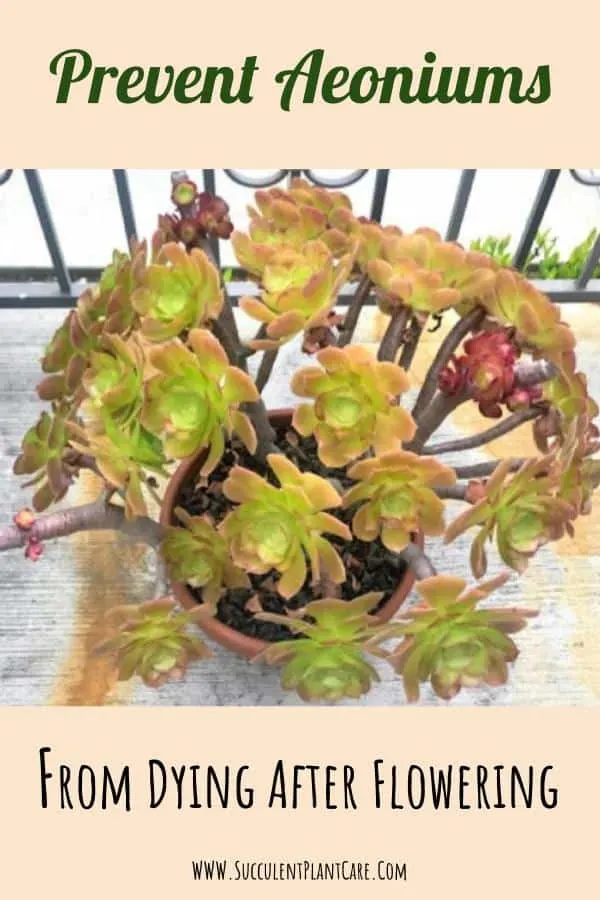
Pin this to save for later or to share with others now!
